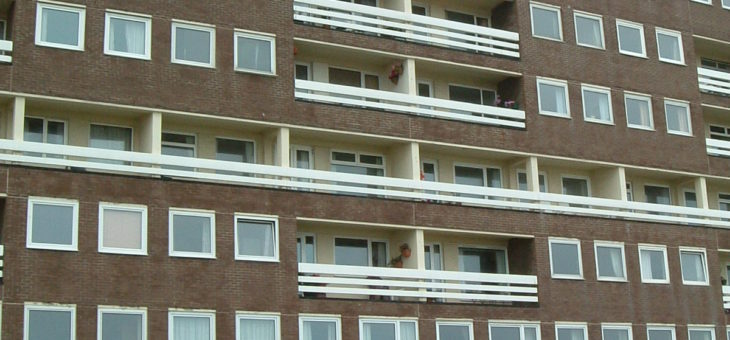Would you be surprised to find cracks in a new building?
When we’re carrying out surveys, we often need to comment on cracks to internal surfaces in relatively new properties. These cracks generally appear where walls meet other walls or where walls meet ceilings. The owners are usually shocked, given the age of the building.
The cracking, however, is minor in most cases and is caused by the very slight differential movement between the two substrates (that is, wall with wall or wall with ceiling). For example, a hairline crack between the wall and ceiling in a loft conversion is often the result of slight differential movement between the wall and ceiling.
It presents no significant structural problem and the join just needs to be filled with a paintable acrylic sealant; a process known as caulking.
Cracks in a 1980s tower block
We were asked to investigate cracking at a high level to a residential block of flats, built around 1980. The cracking was causing distress to the top floor residents. For the most part, it was a horizontal crack, approximately 300mm down from ceiling level. It affected all external walls.
Within the flats, residents had tried to mask the problem over the years. In the photograph below, you can see evidence of the cracking that had caused consternation to so many of the residents.

Crack from concrete meeting plaster
I was able to diagnose the problem immediately. The ceiling, which is also the roof slab, is concrete and has a concrete ‘toe’ to give the slab strength at the edges. The internal skin of blockwork goes up to the underside of the ‘toe’ and the surface is plastered.
The problem occurs when the sun hits the roof; the concrete slab then starts to move differently to the walls. What’s more, new concrete will shrink slightly as it cures and this process can go on for months after construction, causing more cracks to appear.
Plasterboard repair
I reported back that, in my opinion, the crack was of no structural significance and merely represented an aesthetic problem.
The only way to cure the problem completely is to fix plasterboard to the wall so that any movement to the walls can take place behind the plasterboard, without affecting the internal surfaces.
Unfortunately, in this case, the space was too tight. We therefore plan to have the plaster on both sides of the crack cut away and expanded metal lathing placed over the crack before it is re-plastered. This will allow very small amounts of movement to take place behind the EML, but we can’t guarantee complete success. However, the roof has recently been insulated and so there should be much less thermal movement of the concrete slab.
Finally, the building is no longer new, so the concrete should have finished curing and shrinking.
Minor cracks, minor worries
When looking at a crack to your building, ask if it may be the result of two different materials coming together. If you can come to this diagnosis, you should then be able to sleep soundly, in the knowledge that the problem is not serious and you need only find a way to mask it.
What next?
- Read What’s The Crack? The Problem With Pre-Cast Concrete
- Find out about our Building Maintenance Services
- Read the case study, Bedford Place: Restoring A Slate Roof In Brighton


Comments are closed.